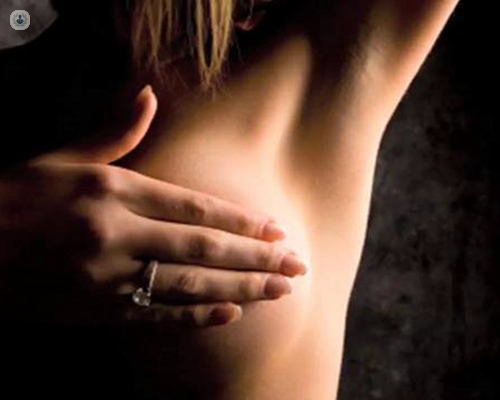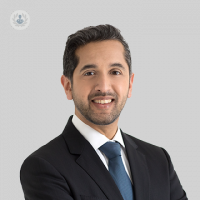What are the different types of breast implants available today?
Written by:In this article below, leading consultant aesthetic, oncoplastic, and reconstructive surgeon, Mr Maisam Fazel, provides us with a comprehensive insight into the different types of breast implants available to patients.

What are the different types of breast implants available today?
Silicone implants are the most used (90 per cent). Silicone is proven to be the safest material and its texture is soft and similar to a normal breast. Saline implants have the advantage of the material being reabsorbed should the implant rupture. However, they can deflate, are usually harder to the touch, and react to changes in temperature.
What role does silicone gel play in breast implants?
Currently, all gels are cohesive to prevent migration in the case of breakage. They can be cohesive in different grades - low, medium and high or stable. The lower the cohesiveness, the softer and less stable they are. The more cohesive and the harder the implant, the likelihood of deforming and leaking in case of rupture is reduced, but these implants need larger surgical incisions which leave bigger scars.
In terms of shape, what options do I have?
The shape of the breast implant used is tailored, considering the desired outcome and anatomy of each patient:
- Round: These are the most frequently used implants. For each volume there are different profiles: low, moderate, high and ultra-high. The greater the projection (height), the smaller the diameter of the implant. They are easier to introduce, and there are no turning problems.
- Anatomical: they are prostheses with an oval form, in the form of tear or drop of water. Three dimensions are considered: length, width and height (projection). These implants are said to give a more natural look, so they are growing in popularity. However, the design must be more precise, with more complex postoperative care, since these implants carry the risk of turning, which would distort the result.
What are the main advantages of the different types of breast implants?
- Smooth: carries more risk of encapsulation in the subglandular plane. These implants can be introduced with a smaller scar, are soft to the touch and there is less incidence of postsurgical infections and seromas.
- Textured or rough: less risk of encapsulation, with a more irregular touch but there is less risk of displacement.
- Microtexturised: more modern, with a lower risk of encapsulation and better touch.
- Polyurethane: wraps the silicone form. They have a lower rate of capsulation and are a good choice in certain circumstances.
What should I consider when getting a breast implant?
There are many important things to keep in mind before undergoing breast augmentation surgery through an implant, which includes personal expectations and reasons for undergoing this procedure:
- Breast implants do not last a lifetime. They will need replacing.
- Over time, the risk of complications increases, requiring surgery.
- The most frequent local complications and adverse effects are: capsular contracture, revision operations, rupture or alteration of the implant. Other complications include implant creases, scarring, asymmetry, pain, and infection.
- Many changes that occur after breast implants can alter aesthetics and be irreversible.
- If implants are removed and not replaced, changes and deformities will occur in natural breasts.
- If implants are fitted, breasts should be monitored for life. Ultrasound scans should be performed every several years and in case of suspected rupture, an MRI examination.
- If you have breast implants you may have a higher but very low risk of developing a rare breast cancer called anaplastic large cell lymphoma (ALCL) or Squamous cell carcinoma (SCC) around the implant. This may require specific treatment.
If you would like to book an appointment with Mr Maisam Fazel, just head on over to his Top Doctors profile today to do so.


